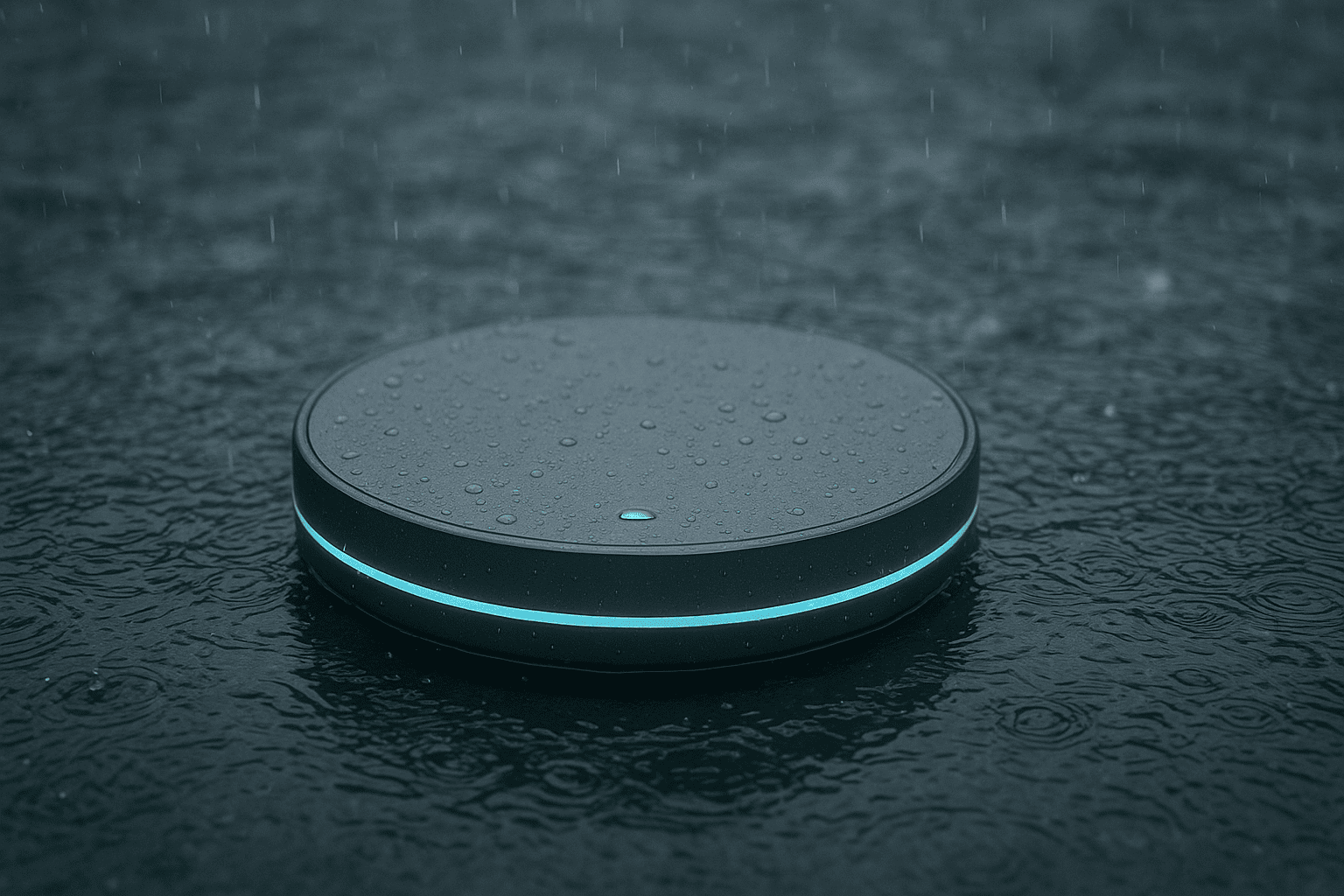Floating Device That Harvests Energy from Raindrops

In a world increasingly reliant on renewable energy, a new floating device that harvests energy from raindrops has captured global attention. Developed by a team of engineers from Singapore’s Nanyang Technological University, the device uses hydropiezoelectric materials to generate power from the kinetic impact of falling raindrops. Its sleek floating design makes it ideal for lakes, reservoirs, and coastal installations — offering clean, decentralized energy without the need for sunlight or wind.
As climate challenges intensify, this innovation could redefine how cities power remote IoT devices, sensors, and even small lighting systems, particularly during monsoon seasons.
Specs & Features
The floating device integrates a nanogenerator-based piezoelectric system that converts the mechanical force of raindrops into electrical energy.
- Output: Generates up to 100 µW per square meter during heavy rainfall.
- Material: Lightweight polymer with flexible nano-films for maximum impact absorption.
- Durability: Water-resistant with self-cleaning surface coating to prevent algae buildup.
- Smart Integration: Equipped with Bluetooth-based telemetry for energy output monitoring.
- Energy Storage: Built-in micro-capacitors store energy for consistent output.
Unlike solar or wind solutions, this system doesn’t depend on sunlight or air movement — making it particularly valuable for tropical and high-precipitation regions.
Design & UX
Visually, the floating raindrop energy harvester resembles a flat circular buoy with a smooth metallic finish. It’s modular — multiple units can be connected like lily pads, forming a network of floating energy tiles.
Its design prioritizes ease of deployment — users can simply place it on any still or slow-moving water body. An embedded LED indicator glows when the system actively generates power, providing a minimal yet intuitive interface.
Performance & Hardware
Underneath its sleek surface, the device uses piezoelectric nanofilms layered over flexible hydrophobic materials, which deform slightly with each raindrop impact, creating charge differentials that produce current.
In field tests across Singapore and Mumbai, the prototype reportedly maintained 92% efficiency during continuous rainfall and operated seamlessly alongside floating solar panels.
While the generated energy is modest, it’s ideal for powering environmental sensors, IoT nodes, buoys, and smart lighting — devices typically requiring low, sustained energy.
Price & Availability
The startup behind the innovation, Rainergy Labs, is expected to commercially launch the first consumer version by Q3 2026, targeting smart-city projects and environmental agencies.
- Estimated Price: $150 per modular unit.
- Availability: Initial rollout in Southeast Asia, followed by partnerships in India, Japan, and Europe.
- Maintenance: Minimal — periodic cleaning every six months.
What’s Missing / Trade-offs
While the technology is impressive, the device’s energy output remains limited — insufficient for large-scale power generation. It also depends on rainfall frequency, which makes it seasonal in arid regions. Another challenge lies in durability during storms or high-wave conditions, where mechanical stress could impact longevity.
However, as a supplementary power source, especially for low-power smart systems, it stands out as a game-changer.
Verdict / First Impressions
The floating raindrop energy harvester represents a fresh approach to renewable power — compact, self-sustaining, and designed for the future of smart infrastructure. It may not replace solar or wind anytime soon, but it could fill crucial micro-power gaps where other sources fail.
In a future defined by distributed energy networks, this small yet ingenious innovation could make a big splash.